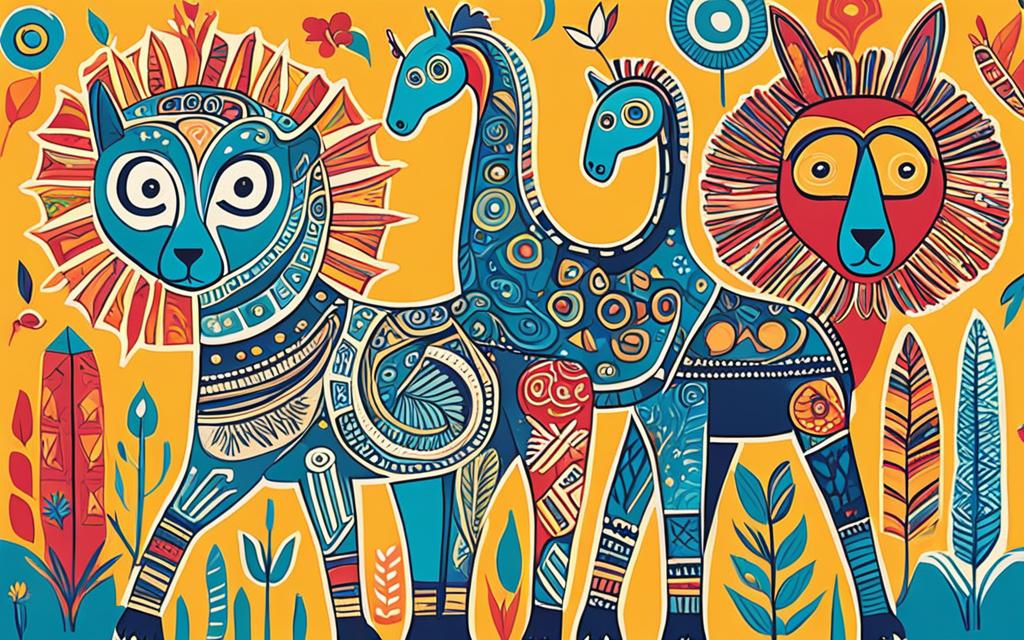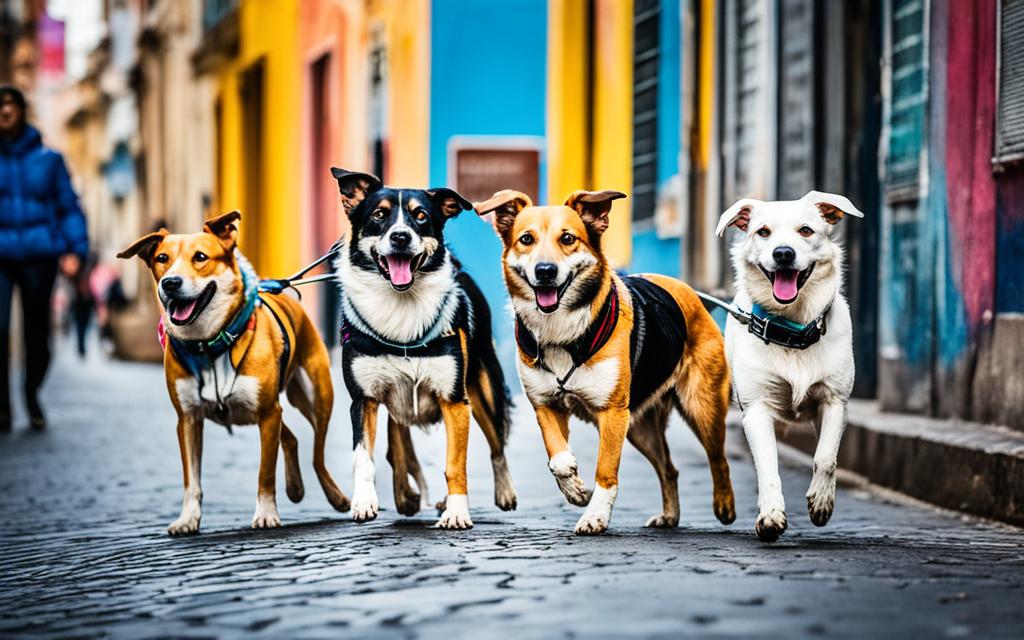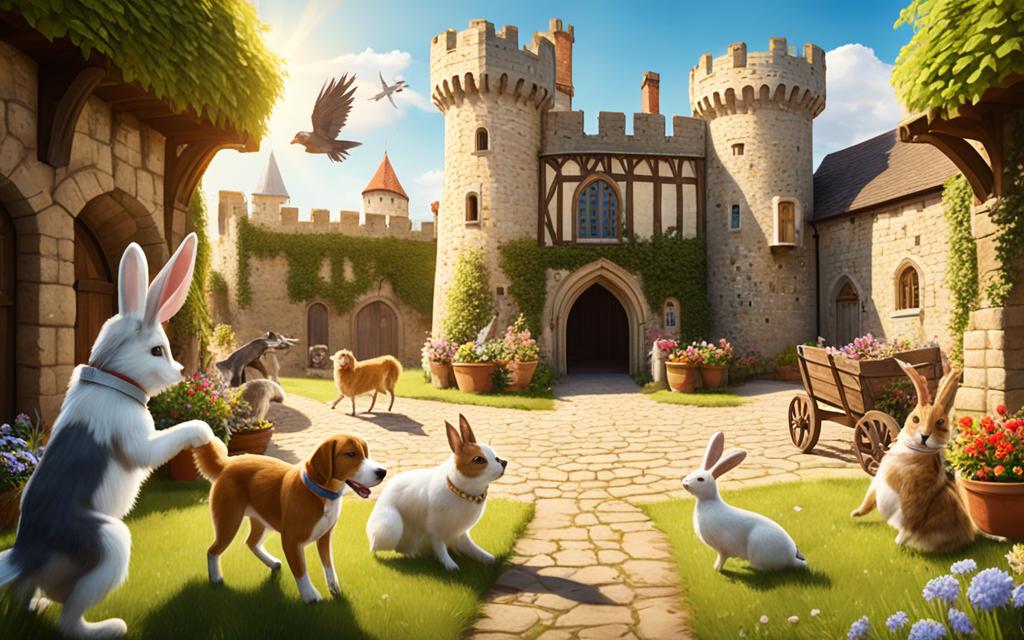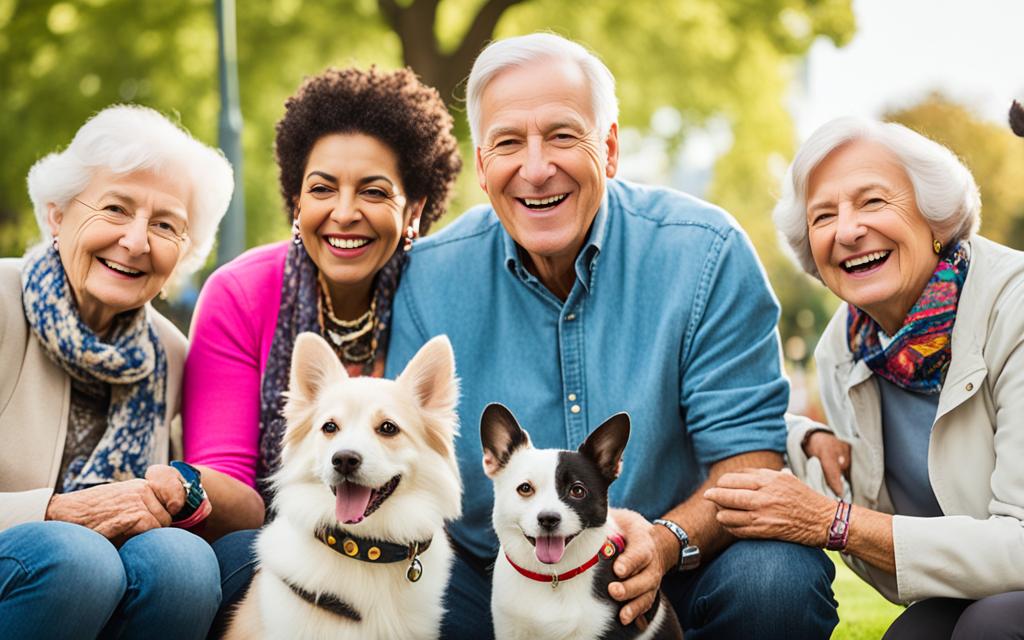As a professional copywriting journalist, I am excited to explore the profound ways in which our canine and feline companions have become integral to our cultural heritage and community values. The intricate bond between humans and animals extends far beyond the realm of biology, manifesting in a tapestry of symbolic and practical significance that spans across diverse societies.
From the revered status of animals in mythology and religion to their pivotal roles in cultural ceremonies and rituals, the animal kingdom has long been woven into the fabric of human civilization. The concept of totem animals and animal spirits holds deep spiritual importance in many indigenous cultures, serving as guides, protectors, or symbols of communal identity. Folklore and cultural tales provide a rich medium for the symbolic meanings of animals, imparting moral lessons and conveying cherished societal values.
But the influence of animals extends beyond the realms of myth and legend. In the artistic realm, their representations in art, sculpture, and cultural symbols mirror societal ideals and identity, further solidifying their place in our collective consciousness. And in the realm of daily life, animals assume practical roles as companions, laborers, or sources of sustenance, enriching the human-animal bond that has endured for centuries.
As we delve deeper into the multifaceted ways in which pets and animals shape our cultural heritage and community values, I invite you to join me on a journey of discovery. Together, we will unravel the intricate tapestry that binds us to our four-legged counterparts, uncovering the profound impact they have had on our shared experiences and the diversity of our global community.
Key Takeaways
- Animals hold profound symbolic and cultural significance across diverse societies, from mythology and religion to cultural ceremonies and rituals.
- The concept of totem animals and animal spirits is deeply woven into the fabric of many indigenous cultures, serving as guides, protectors, or symbols of communal identity.
- Folklore and cultural tales provide a rich medium for the symbolic meanings of animals, imparting moral lessons and conveying cherished societal values.
- The artistic realm reflects the profound influence of animals, with their representations mirroring societal ideals and identity.
- Animals assume practical roles in daily life, serving as companions, laborers, or sources of sustenance, further enriching the human-animal bond.
The Intricate Bond: Humans and Animals Through the Ages
In the realm of mythology and religion, animals often take center stage, embodying divine qualities or serving as messengers between realms. From the revered status of the cow in Hinduism to the biblical symbolism of the lamb, these creatures transcend the mundane, becoming vessels for spiritual narratives and teachings.
Animals in Mythology and Religion
Beyond religious contexts, animals play pivotal roles in ceremonies and rites of passage across cultures. Whether in weddings, funerals, or initiation rituals, their presence symbolizes transitions and augurs significance. Examples abound, such as the Maasai people’s reverence for cattle in rites of passage, highlighting the integral role animals play in cultural milestones.
Ceremonial and Ritualistic Uses of Animals
In many indigenous cultures, the concept of totem animals and animal spirits is woven into the fabric of daily life. These creatures hold profound spiritual importance, often acting as guides, protectors, or symbols of familial or communal identity. The Native American tradition, with its totem poles representing ancestral spirits and animals, stands as a testament to this intricate relationship.
Totemism and Animal Spirits
| Cultural Ceremony | Animal Significance | Examples |
|---|---|---|
| Weddings | Symbolize fertility, prosperity, and protection | Hindu weddings featuring elephants, Chinese weddings with the use of dragons |
| Funerals | Represent the cycle of life, death, and rebirth | African traditions involving the slaughter of cattle, Native American use of eagle feathers |
| Rites of Passage | Mark significant transitions and milestones | Maasai people’s reverence for cattle, Zulu coming-of-age ceremonies with animals |
Cultural Narratives: Folklore and Symbolic Meanings
Cultural tales and folklore provide a rich tapestry for the cultural folklore and animal symbolism that have captivated audiences for generations. From the whimsical fables of Aesop to the enchanting folktales of Africa, these narratives not only entertain but also serve as vessels for passing down cultural values and moral lessons through the power of cultural tales and animal characters.
Folklore and Animal Symbolism
Whether it’s the cunning fox, the majestic lion, or the wise owl, animal characters have long been woven into the fabric of stories that reflect the values and beliefs of diverse cultures. These animal symbols often embody specific traits or represent universal archetypes, serving as metaphors for human experiences and societal ideals.
Animals in Art and Iconography
The artistic realm is yet another canvas where animals leave their indelible mark. Symbolic representations in art, sculpture, and cultural symbols often mirror the cultural values and societal ideals of a particular civilization. From the revered status of the Egyptian cat to the auspicious Chinese zodiac, these animals in art and iconography become iconic representations of a culture’s identity and heritage.

By exploring the rich tapestry of cultural folklore, animal symbolism, and the artistic depictions of animals, we gain a deeper understanding of the ways in which these creatures have shaped the cultural tales and moral lessons that have endured across time and space.
The Cultural Significance of Pets
Beyond symbolism, animals assume practical roles in the daily lives of individuals and communities, serving as companions, laborers, or sources of sustenance. The enduring bond between humans and animals is evident in various aspects of our culture, from agriculture and transportation to national identity, where animals feature prominently as heraldic symbols or mascots, reflecting our deep-rooted cultural pride.
Practical and Symbolic Roles in Daily Life
Pets, in particular, hold a unique place in the cultural tapestry, fulfilling both practical and symbolic roles in our daily lives. As companions, they provide emotional support, alleviate loneliness, and enrich our overall well-being, fostering a strong human-animal relationship. In practical terms, pets can serve as working animals, assisting with tasks such as herding, hunting, or even providing mobility support for individuals with disabilities.
Beyond their practical applications, pets also hold symbolic significance in our cultural narratives and traditions. They may be revered as representations of loyalty, protectiveness, or even spiritual guides, embodying the deep connections we share with the animal kingdom. The presence of pets in our homes and communities reflects our cultural values, such as the importance of companionship, the nurturing of life, and the preservation of our natural heritage.
| Practical Roles of Pets | Symbolic Roles of Pets |
|---|---|
| Companions | Representations of Loyalty |
| Working Animals | Protectiveness |
| Assistance for Individuals with Disabilities | Spiritual Guides |
| Providers of Sustenance | Reflections of Cultural Values |
The cultural significance of pets is a testament to the profound impact they have on our daily lives, shaping our traditions, beliefs, and sense of community. As we continue to explore and celebrate this intricate relationship, we gain a deeper appreciation for the ways in which our animal companions contribute to the richness and diversity of our cultural heritage.
The Origins of Domestic Dogs
The origins of domestic dogs can be traced through a captivating blend of archeological and genetic evidence, as well as linguistic clues and etymological insights. Extensive research has revealed that dogs were among the earliest animals to be domesticated by humans, with traces of their presence alongside human settlements dating back thousands of years.
Archeological and Genetic Evidence
Archeological excavations have uncovered a wealth of artifacts and remains that shed light on the domestication of dogs. Fossilized bones, ancient tools, and other relics have provided invaluable insights into the evolution of these canine companions. Genetic analyses have further illuminated the complex history of dog domestication, suggesting that there were multiple domestication events in different regions of the world.
Linguistic Clues and Etymological Insights
Linguistic studies and the examination of etymological roots have also offered valuable insights into the cultural significance and historical associations of dogs across various societies. The very words used to describe these animals, their roles, and their relationships with humans can reveal fascinating insights into the deep-rooted bond between humans and their canine counterparts.

The Canine Diaspora: Dogs Across Cultures
The spread of domestic dogs across the globe has resulted in a remarkable canine diaspora, with dogs becoming ubiquitous in diverse cultures and regions. From the ancient association of dogs with specific civilizations to the emergence of distinct dog breeds and their global migrations, the presence of these four-legged companions has transcended geographical boundaries, reflecting the enduring bond between humans and their canine counterparts.
Throughout history, the distribution of dogs in different cultures has been shaped by a variety of factors, from human migration patterns to the adaptability of various dog breeds to different environments. As humans have traversed the globe, they have often brought their canine companions along, resulting in the cross-cultural perspectives on dogs that we observe today.
The global distribution of dogs has given rise to a rich tapestry of dog breeds, each with its own unique characteristics and cultural associations. From the sleek and agile Saluki of the Middle East to the sturdy and loyal Akita of Japan, these dog breeds have become integral parts of the cultural heritage and identity of the regions they inhabit.
The migrations of dogs have also played a significant role in shaping the cultural perspectives on dogs across the world. As dogs have accompanied human settlements and traveled alongside their owners, they have influenced the way different societies perceive and interact with these beloved companions, ultimately contributing to the rich tapestry of the canine diaspora.
Stray Dogs: A Global Phenomenon
The presence of stray dogs is a global phenomenon, with communities around the world grappling with the challenges of dog overpopulation and the welfare of these animals. Addressing this issue requires multifaceted approaches that prioritize animal welfare and responsible pet ownership.
Animal Welfare and Management Strategies
Various management strategies have been implemented to tackle the complex problem of free-roaming dogs and ensure their well-being. These include sterilization campaigns, adoption programs, and educational initiatives aimed at promoting responsible pet ownership and reducing the number of stray dogs in communities.
Sterilization programs, for instance, have proven effective in curbing dog overpopulation by preventing uncontrolled breeding and reducing the number of stray dogs over time. Alongside these efforts, adoption programs work to find forever homes for free-roaming dogs, offering them a chance at a better life and reducing the strain on animal welfare resources.
Educational campaigns focused on responsible pet ownership also play a crucial role in addressing the issue of stray dogs. By teaching the importance of spaying/neutering, proper pet care, and the consequences of abandoning animals, these initiatives empower communities to be part of the solution and foster a culture of animal welfare.

| Management Strategy | Description | Impact |
|---|---|---|
| Sterilization Campaigns | Programs to spay and neuter stray dogs and free-roaming dogs, preventing uncontrolled breeding. | Reduces the population of stray dogs over time, addressing dog overpopulation issues. |
| Adoption Programs | Initiatives to find permanent homes for free-roaming dogs, placing them with responsible pet owners. | Provides stray dogs with a chance at a better life and reduces the strain on animal welfare resources. |
| Educational Campaigns | Public awareness and training programs focused on responsible pet ownership, proper pet care, and the consequences of abandoning animals. | Empowers communities to be part of the solution, fostering a culture of animal welfare and reducing the number of stray dogs. |
Pets in Ancient Civilizations
The presence of pets, particularly dogs, has been documented in various ancient civilizations, underscoring the deep-rooted cultural significance of these animal companions. In ancient Egypt, dogs were revered for their loyalty and often buried alongside their human counterparts, reflecting their esteemed status. Similarly, in ancient Israel, the perception of dogs varied, with some passages in the Bible suggesting a more negative connotation, while others highlighted the practical and symbolic roles of these animals.
Dogs in Ancient Egypt and Israel
In ancient Egypt, the canine companions of the pharaohs were often mummified and entombed with their owners, symbolizing the dogs’ elevated status and the cherished bond between humans and animals. Anubis, the jackal-headed god associated with the afterlife, further cemented the sacred role of dogs in Egyptian culture. In contrast, the biblical accounts from ancient Israel present a more nuanced view of dogs, with both positive and negative references. While some passages condemned dogs as unclean or vicious, others recognized their practical value as guardians or even companions.
Companion Animals in Greece and Rome
In ancient Greece and Rome, companion animals, including dogs, were more seamlessly integrated into daily life, serving as both pets and working animals. The presence of these animals is reflected in the art and literature of the time, underscoring their cultural importance. Depictions of dogs in frescoes, mosaics, and sculptures suggest that they were not only cherished for their companionship but also revered for their symbolic significance, such as their association with the goddess Artemis in Greek mythology.
Evolving Perspectives: Pets in Medieval and Modern Times
The cultural perception and role of pets, particularly dogs, have evolved over time, reflecting the changing attitudes and values of human societies. During the medieval period, attitudes toward dogs were often ambivalent, with some accounts highlighting their utility as working animals or guardians, while others portrayed them in a more negative light.
Medieval Attitudes Toward Dogs
In the Middle Ages, the perception of dogs was a complex tapestry, woven with both reverence and suspicion. While these canine companions were sometimes valued for their practical roles in medieval times, they were also viewed with a degree of wariness and even disdain in certain religious and social circles. This ambivalence toward pets in medieval times reflects the evolving cultural perceptions of pets throughout history.
The Rise of Modern Pet-Keeping
However, the rise of modern pet-keeping in the recent centuries has brought about a profound shift in the way we view and interact with our animal companions. The increasing prevalence of pets in households, as well as their growing acceptance as emotional support animals and therapy pets, underscores the profound impact they have on our contemporary culture and communities. This evolution of pet ownership has transformed the cultural perceptions of pets, elevating their status and importance in our lives.

Conclusion
From the sacred realms of mythology to the practicalities of daily existence, the cultural significance of animals is a universal thread that binds humanity. Understanding and appreciating these connections not only enriches our global tapestry but also fosters a profound respect for the enduring relationship between humans and the animal kingdom. Pets, in particular, have become integral components of our cultural heritage and community values, fulfilling both practical and symbolic roles in our lives.
As I continue to explore and celebrate the deep-rooted bond between humans and animals, I can gain a greater appreciation for the ways in which our canine and feline companions enrich our shared experience and contribute to the diversity and richness of our global community. The cultural significance of pets, the human-animal bond, and the importance of responsible pet ownership and animal welfare are all integral to preserving the rich tapestry of our cultural heritage and community values.
By embracing the profound impact of animals on our lives, we can cultivate a greater understanding and respect for the animal kingdom, ensuring that our cherished pets continue to play a vital role in shaping the cultural landscape of our society. The continued exploration of the human-animal bond will undoubtedly lead to a deeper appreciation for the enduring legacy of our animal companions and their profound influence on our collective experience.
FAQ
What is the cultural significance of pets?
How have animals been depicted in mythology and religion?
What is the role of animals in cultural ceremonies and rituals?
What is the concept of totem animals and animal spirits in indigenous cultures?
How are animals represented in cultural folklore and art?
What are the practical and symbolic roles of pets in daily life?
What is the origin and history of domestic dogs?
How have domestic dogs spread globally and influenced different cultures?
How are the challenges of stray dogs being addressed?
How have the cultural perceptions and roles of pets evolved throughout history?
Source Links
- https://www.linkedin.com/pulse/cultural-significance-animals-threads-bind-humanity-across-2xyyc
- https://www.ncbi.nlm.nih.gov/pmc/articles/PMC7142965/
- https://propertiabali.com/a-tribute-to-balis-beloved-dogs/

